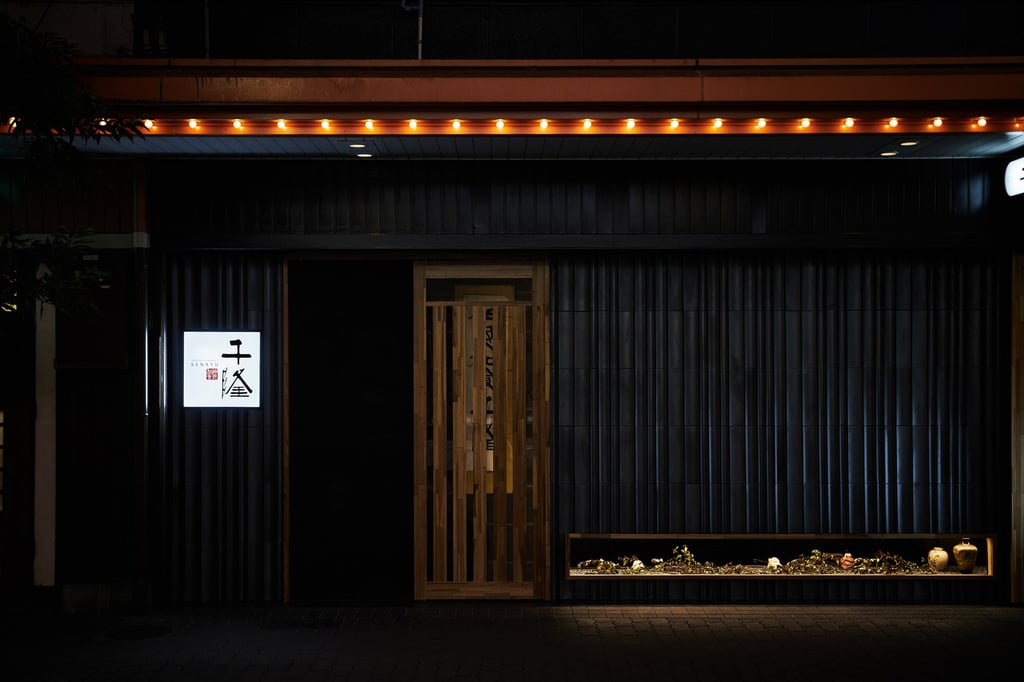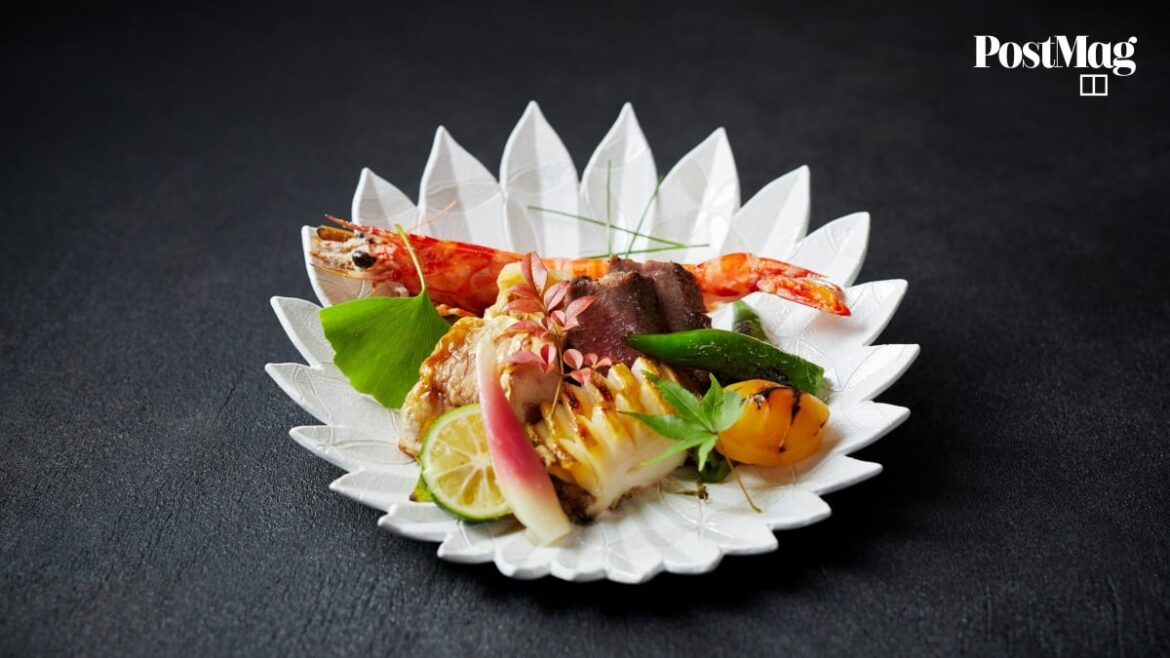Shinon Washoku Senryu is temporarily closed. Find more information on their official website.I behold the glistening cuts of sashimi, delicately plated in an ovoid silver bowl that appears to float on a bed of dry ice, designed to resemble the boat of the god Ebisu crossing the ocean. The types of sashimi are also chosen for their symbolism: kuruma ebi for longevity and good fortune, sea bream for auspiciousness, scallop for wealth. I’m just about to reach over with my chopsticks when the deafening rumble of a train passing overhead breaks the reverie.
I’m sitting on the tiny second floor of Shinon Washoku Senryu, a newly opened restaurant tucked under the train tracks leading into Osaka Station, one of the largest transport terminals in the world.
 The ingredients at Shinon Washoku Senryu are blessed and purified by Shinto priests. Photo: courtesy Shinon Washoku Senryu
The ingredients at Shinon Washoku Senryu are blessed and purified by Shinto priests. Photo: courtesy Shinon Washoku Senryu
In spite of its quotidian surroundings, the restaurant has grand ambitions to reintroduce osagari (“leftovers” or “hand-me-downs”), the act of offering food to the gods at a shrine, who, after their meal, then leave it for worshippers to finish up.
It’s a tradition with roots in Japan’s indigenous Shinto religion, which emphasises the importance of offerings to the kami, or spirits, as a way to cultivate harmony between humans and the divine. Consuming the shinsen, as the blessed food is called, symbolises a communal bond between the worshippers and the kami, as it is believed the kami imbue the food with their blessings before passing it back to the people. The facade of Shinon Washoku Senryu. Photo: courtesy Shinon Washoku Senryu
The facade of Shinon Washoku Senryu. Photo: courtesy Shinon Washoku Senryu
Shinon traces its origins to the vision of second-generation restaurateur Yasuyuki Kibayashi. His relatives were masters of the koto, a traditional Japanese instrument, and with a deeply spiritual mother, Kibayashi was attuned to the nuances of Japanese culture and religion. As an adult, he assumed the mantle of patriarch, running the family’s izakaya business over five decades. Towards the end of his life, however, Kibayashi considered the act of eating in a spiritual light.
Inspired, his son and successor, Yoshinori Kibayashi, travelled to Ise Jingu, one of the most important Shinto shrines in Japan, to seek out a priest to name the new culinary concept. Shinon Washoku was born, its name translating to “divine grace” and “Japanese cuisine”.


AloJapan.com